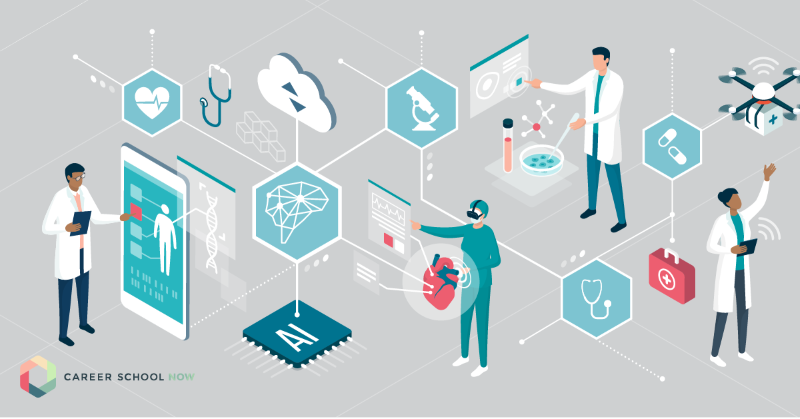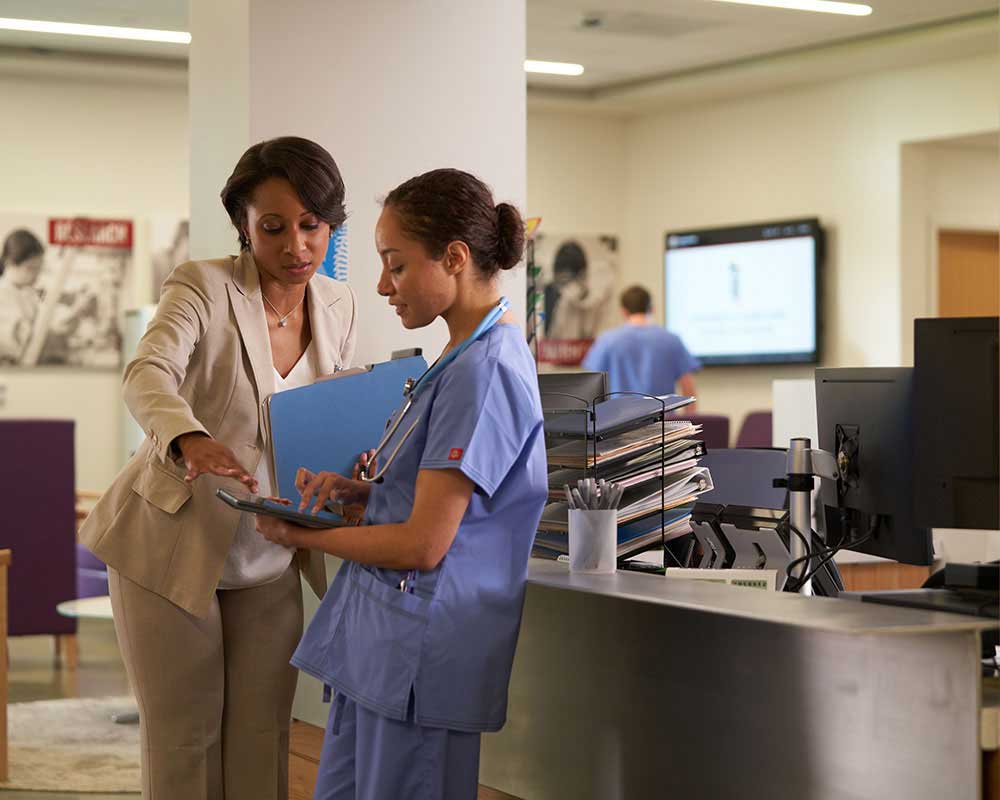The Significance of Medical Administration in Healthcare Administration
The Significance of Medical Administration in Healthcare Administration
Blog Article
Finest Practices in Medical Administration for Improving Performance and Reducing Costs
In the ever-evolving landscape of health care, the pursuit of finest techniques in clinical administration is extremely important for boosting performance and suppressing expenditures. By integrating innovative modern technologies such as digital health records and telemedicine, medical care carriers can improve procedures and enhance individual care.
Leveraging Advanced Modern Technology
The assimilation of electronic services into health care systems has actually changed the method facilities operate, enhancing processes and boosting person care. By systematizing person info, EHRs remove the need for troublesome paperwork and facilitate smooth communication among healthcare companies.
Telemedicine is one more technical advancement that has actually reinvented patient interaction. It provides convenience for both people and health care specialists by enabling remote assessments, which can minimize the demand for in-person visits and optimize visit scheduling. Furthermore, telehealth platforms can extend medical care accessibility to country or underserved areas, bridging gaps in care delivery.
Moreover, using Artificial Knowledge (AI) and artificial intelligence is becoming progressively widespread in predictive analytics, enabling early discovery of potential wellness problems and even more enlightened decision-making. These technologies, when integrated effectively, can boost diagnostic precision and personalize person treatment strategies, eventually causing boosted health care end results and functional performance.
Optimizing Source Allowance
Effective resource allotment is essential for maximizing the performance of clinical management. By tactically handling sources such as personnel, tools, and finances, health care facilities can considerably boost their operational efficiency, enhance client end results, and minimize unnecessary expenditures. The initial step in enhancing resource allowance involves carrying out a comprehensive evaluation of present properties and determining areas where resources might be underutilized or overextended. This evaluation ought to be data-driven, utilizing metrics and analytics to educate decision-making processes.
Focusing on source allotment based on individual requirements and service demands is vital. This includes lining up sources with high-demand areas, such as emergency situation treatment or specialized treatments, to ensure prompt and effective patient treatment. Carrying out adaptable staffing models can additionally enhance labor sources by adjusting personnel appropriation in action to varying person quantities. In addition, accepting telemedicine and other technological options can reduce physical resource restraints by providing alternative opportunities for patient-provider communications.
Funds should be thoroughly kept track of and alloted with calculated insight to support both temporary functional needs and long-lasting institutional objectives. This consists of investing in training programs that boost personnel expertises and adopting energy-efficient practices that reduce functional expenses (medical administration). Inevitably, an enhanced resource allowance approach cultivates a sustainable medical care environment that is responsive, effective, and economically sensible
Streamlining Workflow Processes
When medical care centers aim to enhance operational efficiency, improving process processes ends up being an essential focus. Effective operations decrease redundancy, remove unneeded actions, and boost sychronisation among healthcare specialists. This approach not only accelerates service shipment yet likewise improves the top quality of client treatment.

Following, modern technology integration plays a considerable duty in simplifying process. Applying digital wellness documents (EHRs) and computerized physician order access (CPOE) systems minimizes paperwork, lessens human mistake, and makes sure info comes to all relevant personnel. Furthermore, leveraging telemedicine systems can enhance person consultations and follow-ups, minimizing the strain on physical facilities.

Inevitably, structured workflows result in cost reductions and enhanced individual complete satisfaction, promoting a more lasting medical care environment.
Enhancing Data Administration
Structure upon streamlined process, optimizing information management ends up being a vital part in advancing healthcare management. Efficient data monitoring systems are essential for maintaining exact person documents, boosting decision-making, and guaranteeing conformity with regulative requirements. By executing robust information monitoring remedies, healthcare facilities can improve the top quality of person treatment while simultaneously minimizing operational costs.
One trick facet of improving find out here data monitoring is the integration of sophisticated electronic health record (EHR) systems. These systems assist in the smooth exchange of patient information throughout various departments, lowering duplication of tests and lessening errors. A well-designed EHR system sustains data analytics, enabling doctor to identify fads and make notified choices regarding client care.
In addition, protecting patient information is paramount. Embracing thorough cybersecurity procedures, consisting of security and routine audits, makes certain the integrity and discretion of delicate info. This not only protects individuals however additionally keeps the institution's online reputation.
Buying staff training is an additional vital aspect. Informing health care professionals on data administration practices enhances their capability to effectively use innovation, resulting in improved client end results. Finally, improving data monitoring through innovative innovation and detailed training is crucial for achieving performance and expense reduction in clinical administration.
Fostering Collaborative Communication
An essential component ahead of time clinical management is promoting collaborative interaction amongst health care experts. Efficient communication is critical for making sure seamless individual treatment, maximizing treatment outcomes, and view it minimizing errors. By motivating open dialogue and control across multidisciplinary groups, health care companies can boost their operational efficiency and reduce unnecessary costs.
Central to this approach is the combination of communication innovations such as digital wellness documents (EHRs) and safe and secure messaging systems, which help with the rapid exchange of critical client information. These tools enable doctor to accessibility and share information in actual time, ensuring that all group members are notified and straightened in their decision-making procedures. Regular group meetings and interdisciplinary rounds can further promote a culture of cooperation and liability.
Educating programs concentrated on boosting communication skills are likewise crucial. These programs can help personnel develop the capacity to share info clearly and listen proactively, therefore minimizing misunderstandings and promoting an encouraging work environment. On top of that, adopting standardized interaction procedures, such as SBAR (Circumstance, Background, Assessment, Suggestion), can enhance the exchange of info, guaranteeing that important information are shared succinctly and successfully. Eventually, cultivating collaborative communication results in boosted healthcare delivery and cost savings (medical administration).

Final Thought
Incorporating advanced innovation, such as digital wellness records and telemedicine, alongside optimized resource appropriation and streamlined workflow processes, is essential for enhancing efficiency in medical management. Reliable information management and fostering joint interaction among healthcare teams are critical for decreasing redundancies and boosting treatment top quality. By prioritizing preventative care and taking part in top quality enhancement efforts, medical care companies can accomplish considerable price savings and improved individual results, thereby making sure lasting healthcare delivery in a progressively intricate setting.
Report this page